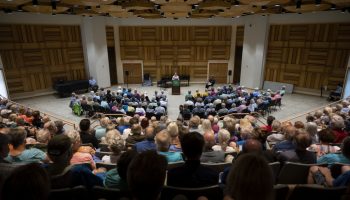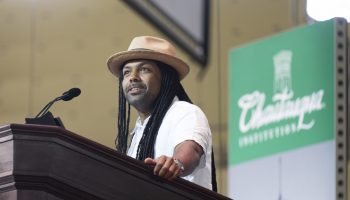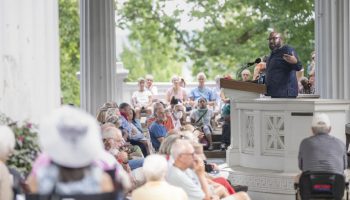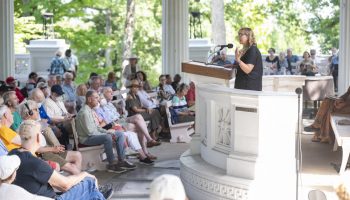
It’s an archaeological portrait of everyday life that Eric Meyers wants to paint in his interfaith lecture — a portrait of lower Galilee, the area where Meyers said Jesus Christ grew up.
“Literary and archaeological material has shown definitively that there was a strong culture of Jewish life established in Galilee,” said Meyers, a Biblical scholar, archaeologist and Bernice and Morton Lerner Professor Emeritus of Judaic Studies at Duke University.
In 1981, Meyers was part of the team that discovered the oldest known piece of an ark of the covenant while digging in the Israeli town of Nabratein, coincidentally the same year the movie “Raiders of the Lost Ark” was released.
At 2 p.m. Thursday, July 11 in the Hall of Philosophy, Meyers will present “Jesus in Galilee, A Jewish Perspective,” as part of Week Three’s interfaith theme, “What Archaeology Tells Us About Biblical Times.”
“Other students of the life and ministry of Jesus had thought and concluded that the Galilee was deeply Hellenized, Greek-speaking and influenced by outside culture,” Meyers said. “Recent research has shown that was completely erroneous. There were virtually no known Greeks in the Galilee in the first century, except in the pagan Roman cities that surrounded it.”
According to Meyers, evidence from the hundreds of former Jewish villages and from his own expeditions has given him indications of “a Torah-led, Biblically inspired everyday life (in Galilee).”
“We have ritual baths, we have half-a-dozen synagogues in the north and a dozen or so in the south, especially in a place called Magdala,” Meyers said. “So, painting this picture, we see that Jesus’ ministry focused on the rural communities in the Galilee in the north and avoided cities like Sepphoris that were deeply Hellenized.”
That assessment is in stark contrast to some other archaeological descriptions of Galilee, according to Meyers.
“One (description) is a very Greek version of the Galilee,” Meyers said. “Another is a Jewish depiction of the background of Jesus that is backward, out-of-touch and not informed by Torah or Biblical law.”
Through Duke University and his local Jewish Community Center, Meyers said he’s taken students to archaeological digs in the Galilee area for nearly 50 years.
Meyers said he’s also experienced violent resistance by Orthodox Jews in response to his excavations.
“We’ve been attacked, bullied and had our digs invaded by them,” he said. “They’ve smashed up artifacts and turned over columns, things like that. The Orthodox are against digging graves, which has set back scientific archaeological research greatly in the region. DNA studies know about all sorts of things relating to human disease and health that would be greatly advantageous for scientists and medical research to know about.”
But for his interfaith lecture, Meyers said he wants to focus on demonstrating that Judaism played a greater role in Jesus’ early life and in his community than was previously believed.
“These new studies have shown Jesus and his followers’ deep commitment to the Jewish faith as it was in the early decades of the first century,” he said.
Audience members at today’s lecture can access slides that accompany the presentation from their smart devices at
chq.org/screen.





